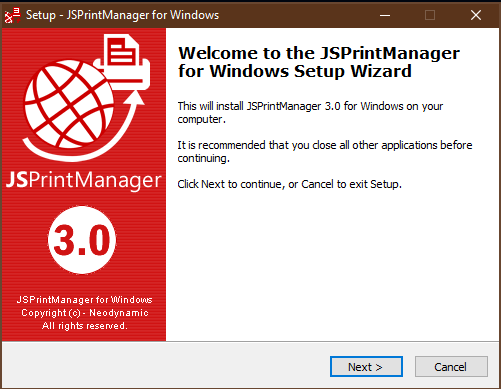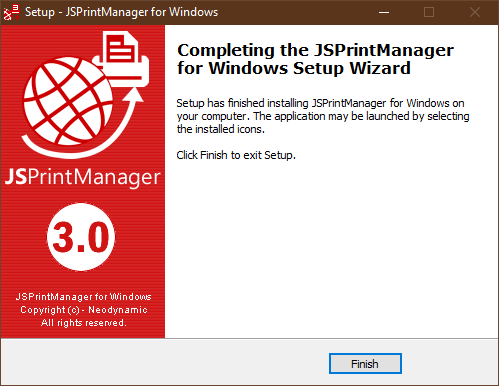Thermal Printer Setup with Windows
This guide will enable you to set up your thermal printer to work with the Hopstack platform.
As a customer, setting up your thermal printer with Hopstack is crucial to enable mission-critical features such as:
Printing shipping labels
Printing box labels
Printing location barcodes
This guide consists of three main steps:
Installing and configuring the printer with Windows
Installing and configuring JSPrintManager
Setting up and testing the printing workflow from the Hopstack platform
Please note that the Hopstack currently does not actively support or maintain printer enablement for non-Windows operating systems (ChromeOS, macOS, Linux, etc.)
We do have a guide on setting up a Zebra printer with macOS. However, this is only applicable to specialised use cases that we have seen across multiple customers and may not be applicable to you unless your implementation engineer has specifically sent over the relevant guide to you.
If your organization requires such a use case, please specify this to your implementation engineer during the implementation process.
For any queries, please reach out to us at support@hopstack.io
Step 1: Installing and configure the printer with Windows
1. Please install the driver for your Hopstack-supported printer.
To get a list of all printers supported by the Hopstack platform, please refer to this link.
If your printer name is not mentioned in the list, then navigate to your printer manufacturer’s website and download the required printer drivers from the product page.
Please refer to manufacturer-provided instructions for downloading the correct drivers for your printer.
2. Connect your printer to a Windows computer and a power outlet using manufacturer-provided cables.
3. Switch on the printer and go to the connected computer.
4. Navigate to Printers & Scanners.
(Start Menu → Settings → Devices → Printers & scanners) to check if the printer is detected properly.
5. Click on the name of the printer that needs to be configured with the platform and click on the “Manage“ button.
6. Click on the “Printing Preferences” button and search for the option to configure label sizes.
Please note that not all printers may have user-friendly option names to configure label sizes.
A general rule of thumb is to search for any field where dimensions are available to modify
(e.g. - 4x6, 3x2, etc.)
7. Depending upon the type of label that needs to be printed as well as the supported printer paper, add a new stock or label size according to the size of the labels you expect the printer to print in the long term.
If the printer settings require values in the metric system, please use this inch-to-mm converter to make the necessary conversions.
8. Once the label size has been configured, apply the newly configured settings and close this window.
If station is connected to one printer only, please mark that printer as default printer.
In case “Set as Default“ setting is missing, please uncheck “Let windows manage my default printer“ on Printers and Scanners page.
In case workflow requires connecting multiple printers are same station, Please notify implementation team to enable this feature.
Go to the “Printers and Scanners“ > Manage > Printer Properties.
Click on the Name. of the printer and rename printer in a following way.
Shipping label printer to '4x6'
FNSKU printer to 'FNSKU'
Step 2: Install and configure JSPrintManager
The Hopstack platform uses a utility named JSPrintManager to perform print queue management on your local Windows system. This allows Hopstack to perform one-click printing as well as automated printing based on the fulfillment of actions.
Hence, this is a very crucial step and must be followed as per the guide’s instructions.
While there may be newer versions of the software available on the official website, Hopstack uses JSPrint Manager v3.xx only due to our license agreement and platform configurations.
Hence, using any other version will not connect to the Hopstack platform.
The link to download the recommended software is attached below.
1. Click this link to download JSPrint Manager v3.0.21.601 from the official developer’s website.
2. Double-click on the installer to start the installation process. The following window should open up.

3. Click on “Next” and allow the installer to complete the installation.
Once done, you will see a window that looks like this

4. Click on “Finish” to close the window and complete the installation.
For good measure, open your start menu and click on JSPrintManager 3.0. Please note that this will not result in any window being opened.
Instead, this will open up a background utility that can be configured in the Quick Action menu in the bottom right-hand corner of your screen (refer to image)

5. Right-click on the JSPrintManager icon and ensure that “AutoStart” is enabled (refer to image)
.png?inst-v=aabfa038-f877-4a1d-b5cb-a51b8017af2b)
6. Your JSPrintManager is now configured
Step 3: Setting up and testing the printing workflow from the Hopstack platform
Please note that this section can only be completed by a user with admin-level access to the Hopstack platform instance. If you are not an admin, please reach out to your warehouse manager to complete this section of the guide.
Admin privileges are only required for the first-time setup and will not be required during day-to-day operations.
1. Log in to your Hopstack platform using the credentials provided to you.
Please note that you must be an admin to complete this part of the setup. This would be a one-time effort.
If the Hopstack platform is already open, then reload the screen.
2. Navigate to “Location Management” under the Setup Section of the Hopstack platform.
3. Click on the print icon next to any location code and configure it as follows:
Print a 1D barcode with a label size equal to the label size you configured in Step 1 and print one copy.
4. Sometime during this process, you will receive a prompt that looks like this (refer to image)

5. Please ensure that the checkbox is checked as in the image and press “Allow”
6. Return to the Hopstack platform and click on “Print” to run a test print
If the guide was completed successfully, then the test print will come out as configured and your printer will be ready to use.
If there are any discrepancies with the print in terms of quality, dimensions, visibility or otherwise, please notify your product expert or deployment lead about the same.
If the test print does not print out, then there is a chance that your printer may not be supported by the Hopstack platform. Please notify your deployment lead about the same and allow us 48-96 business hours to get back to you with a solution or alternate approach.
Optional Step: If Multiple Printers are connected to the same computer
If multiple printers are connected to the same station in your operations, then the printer needs to be distinguished based on the type of label it is intended to print, as well as the size of paper in the spool. The below mentioned guide is for Windows OS. If you have a MacOS/Linux/any other non-Windows OS device, please reach out to your implementation engineer for guidance.
Step 1: Name the Computer
This step is important since it allows the Hopstack platform to distinguish and identify every device registered to the platform on a system-root level.
Open PC Settings and go to System > About
2. Click “Rename This PC” button
3. Name the computer with an easy to identify name that is representative of the station it is placed at. For example, Packer1, Packer2, etc.
4. After naming it, Press “Next” button.
5. Press “Restart Now”. Wait or restart the computer. Please make sure to save your data and close all programs if you are restarting now.
Step 2: Windows Sleep Settings
Open PC Settings and go to System > Power & Sleep
Make all available options “Never”.
